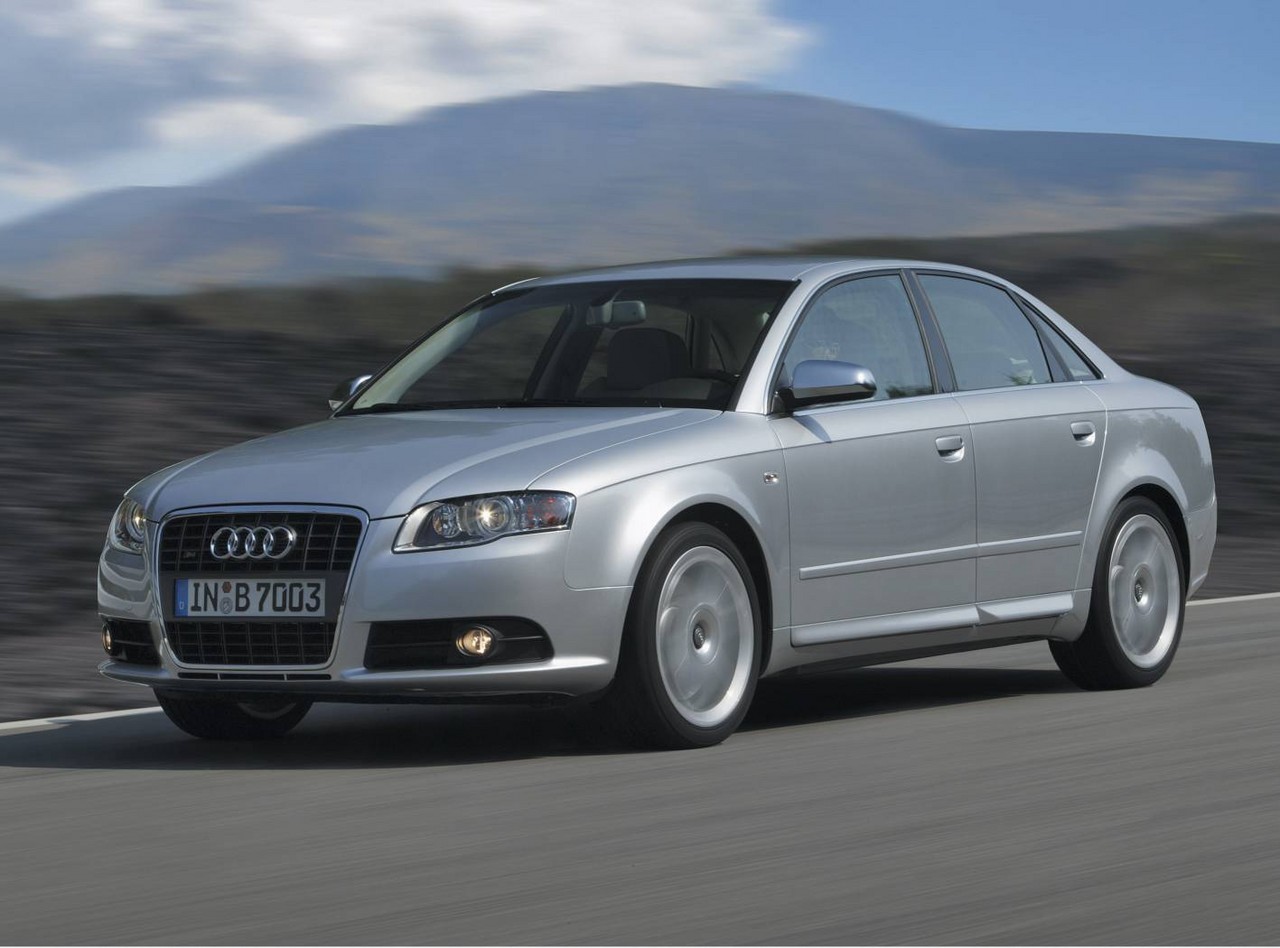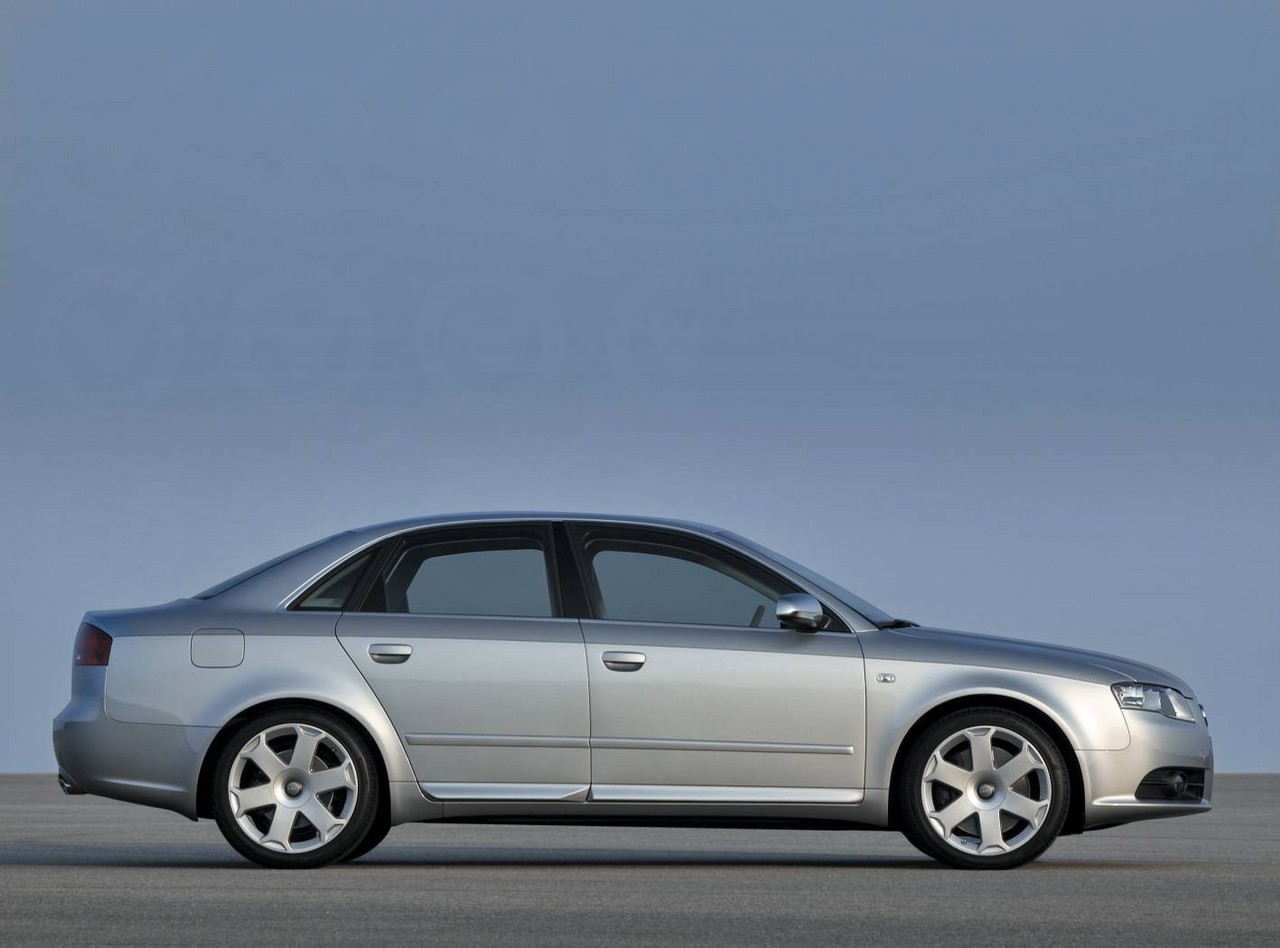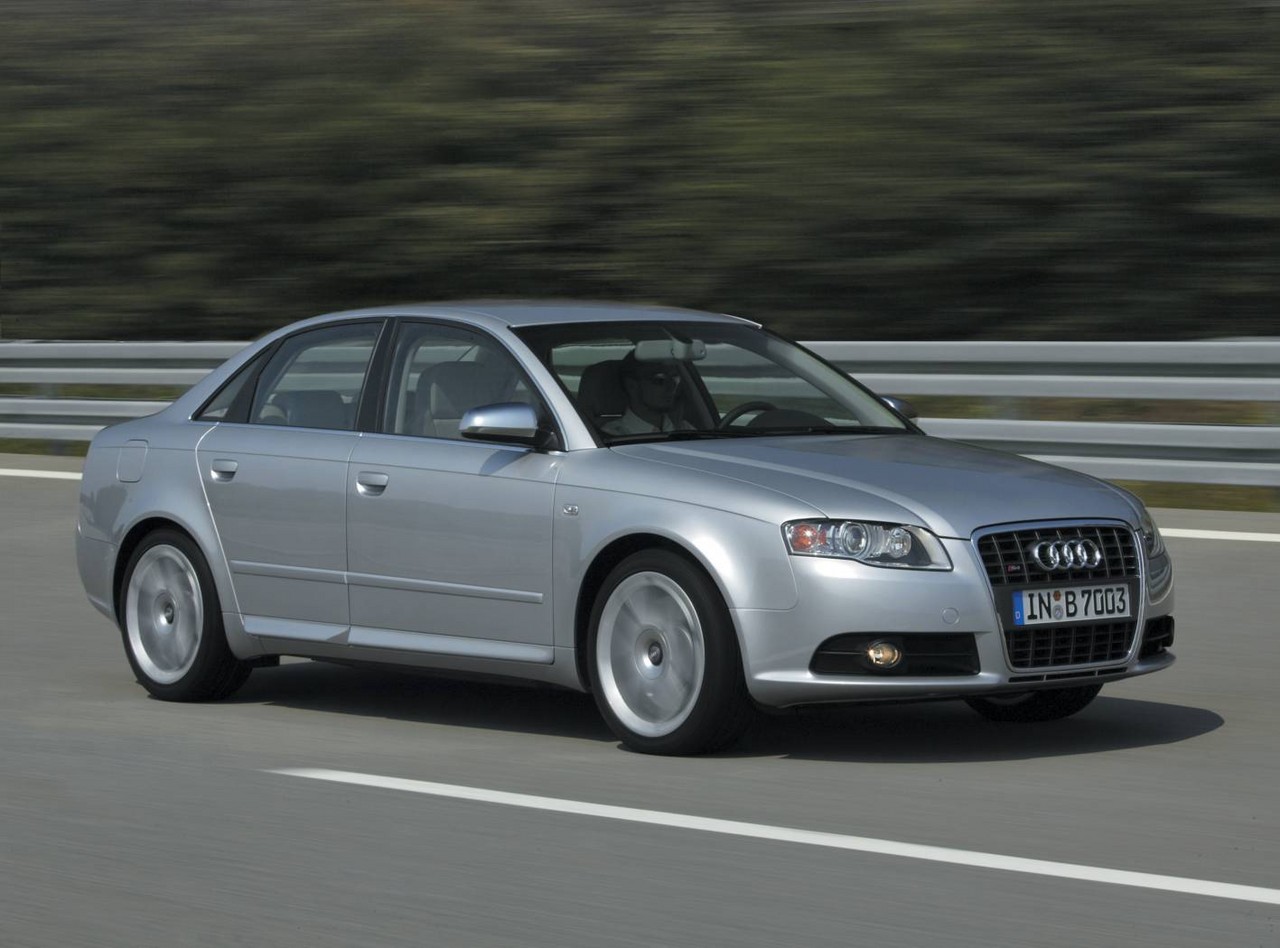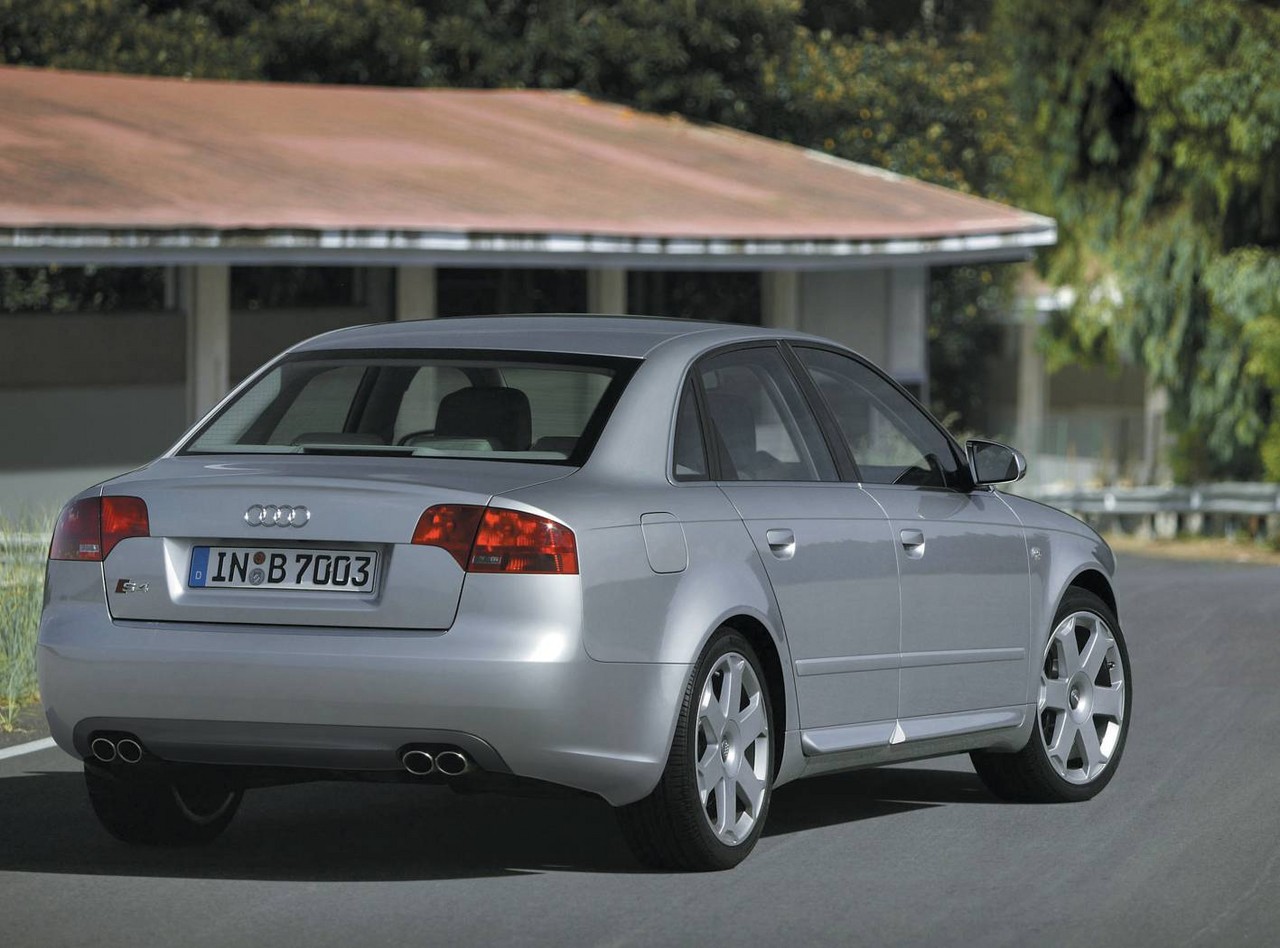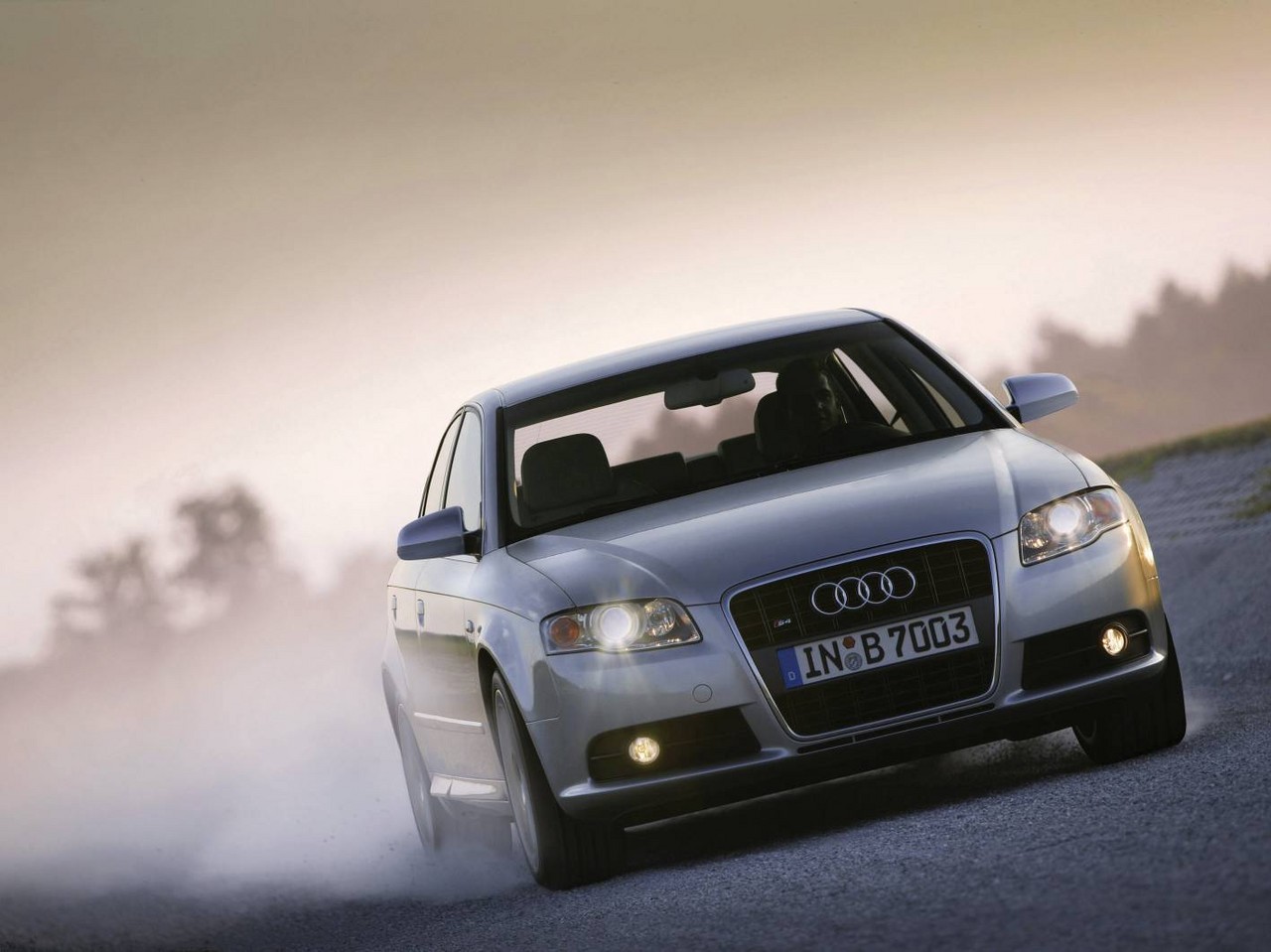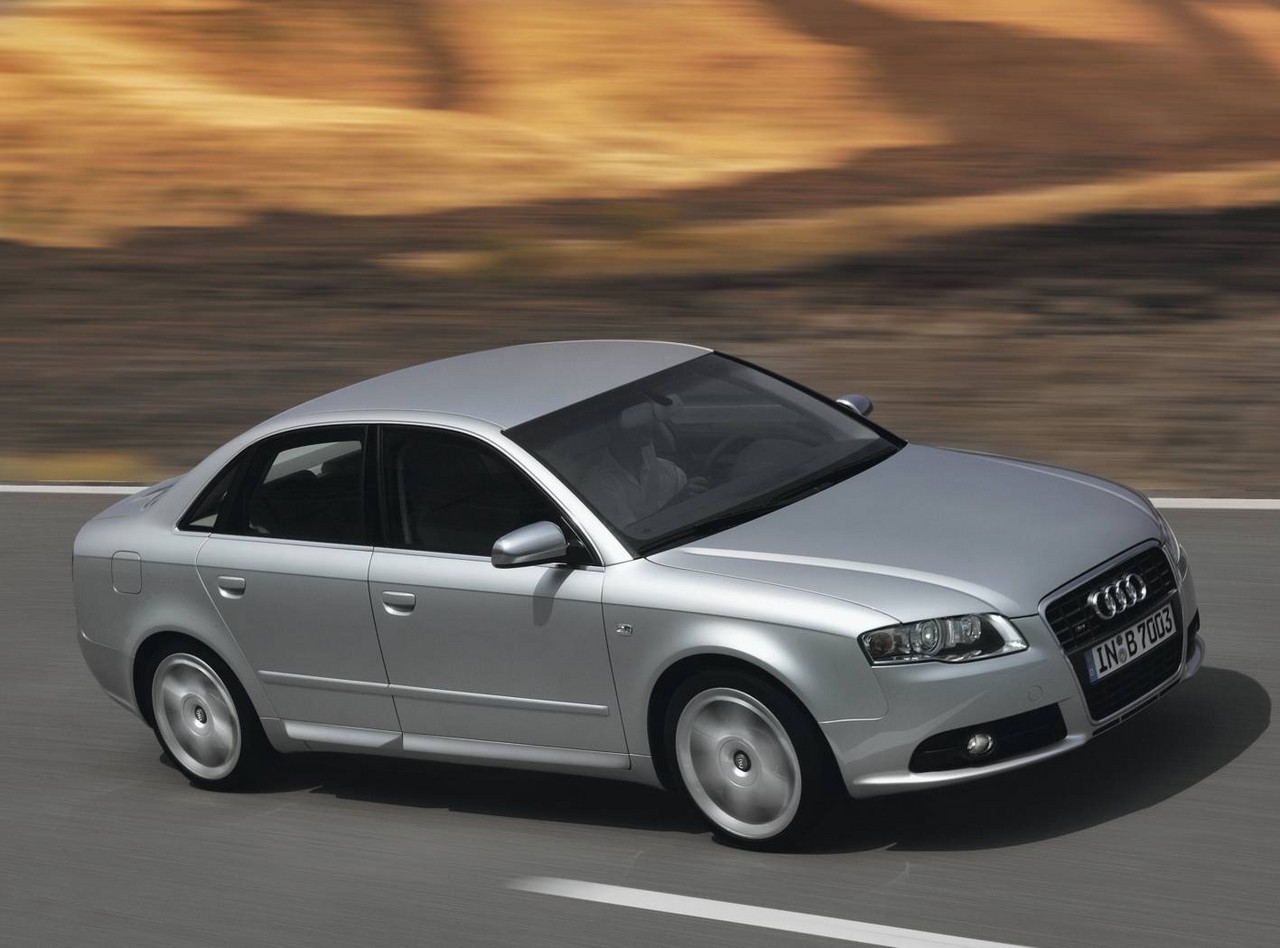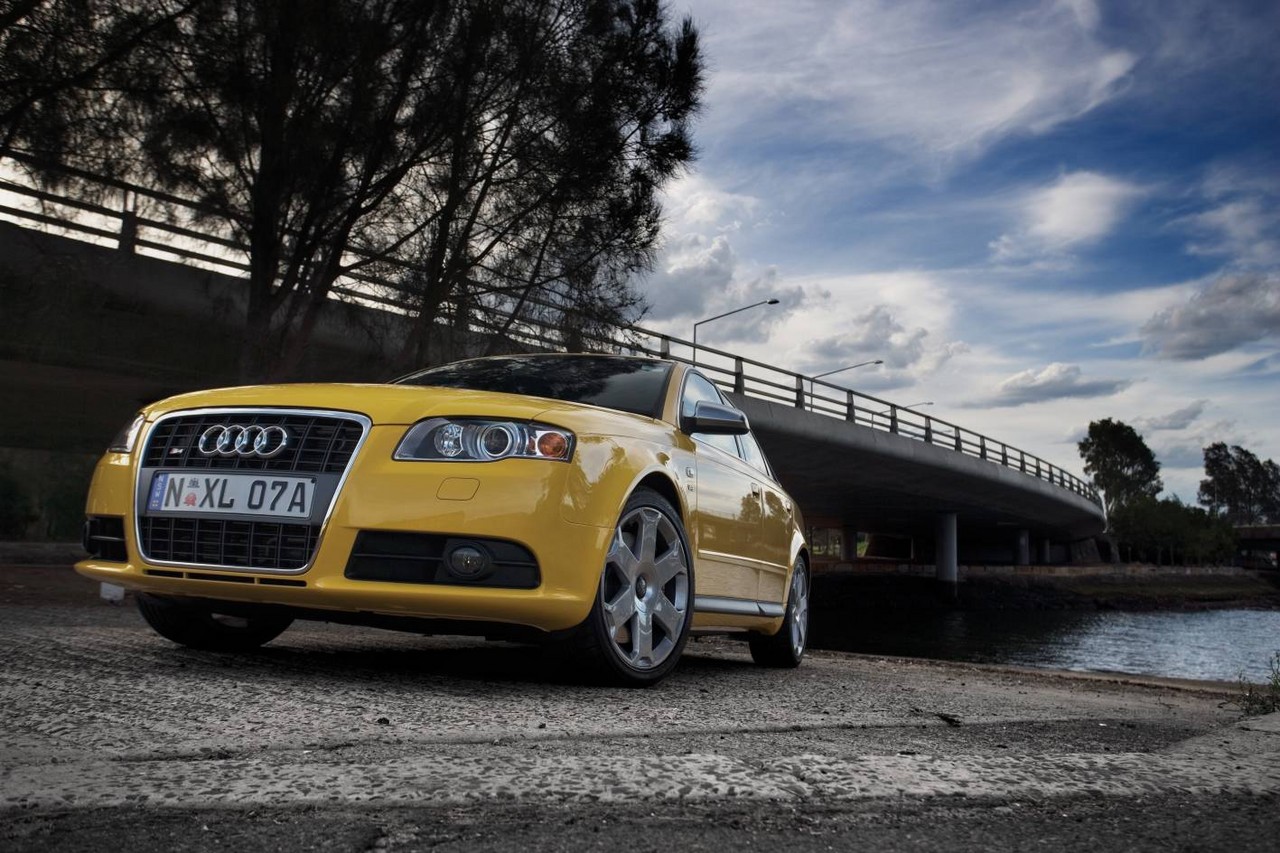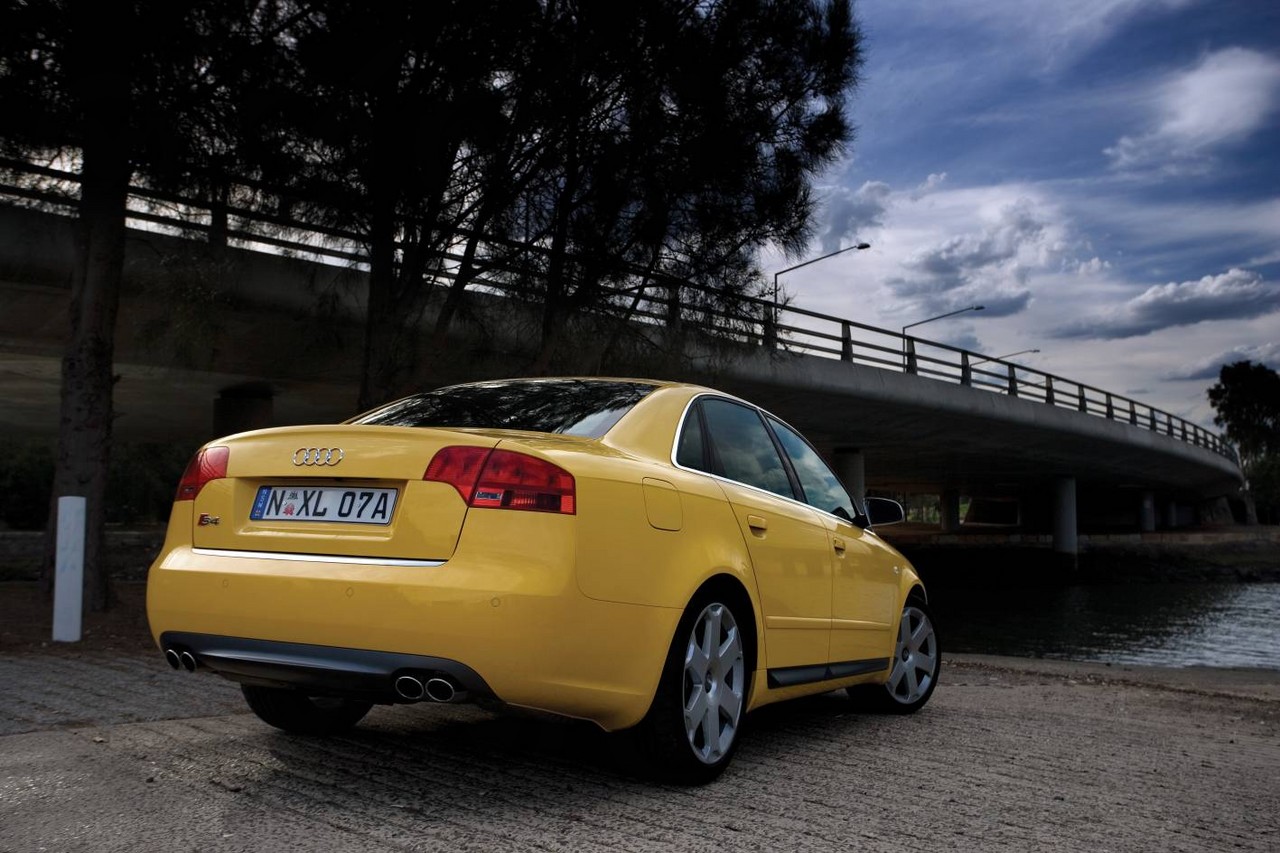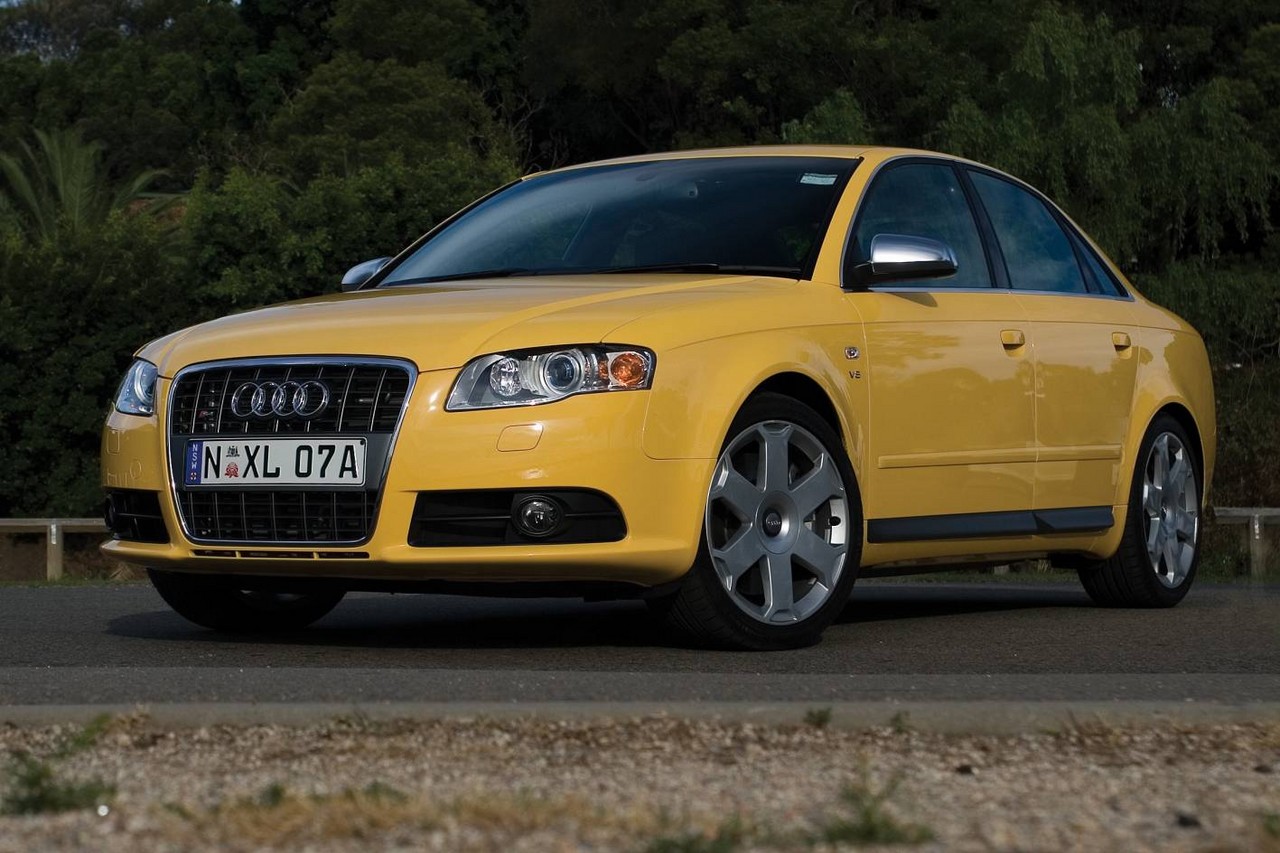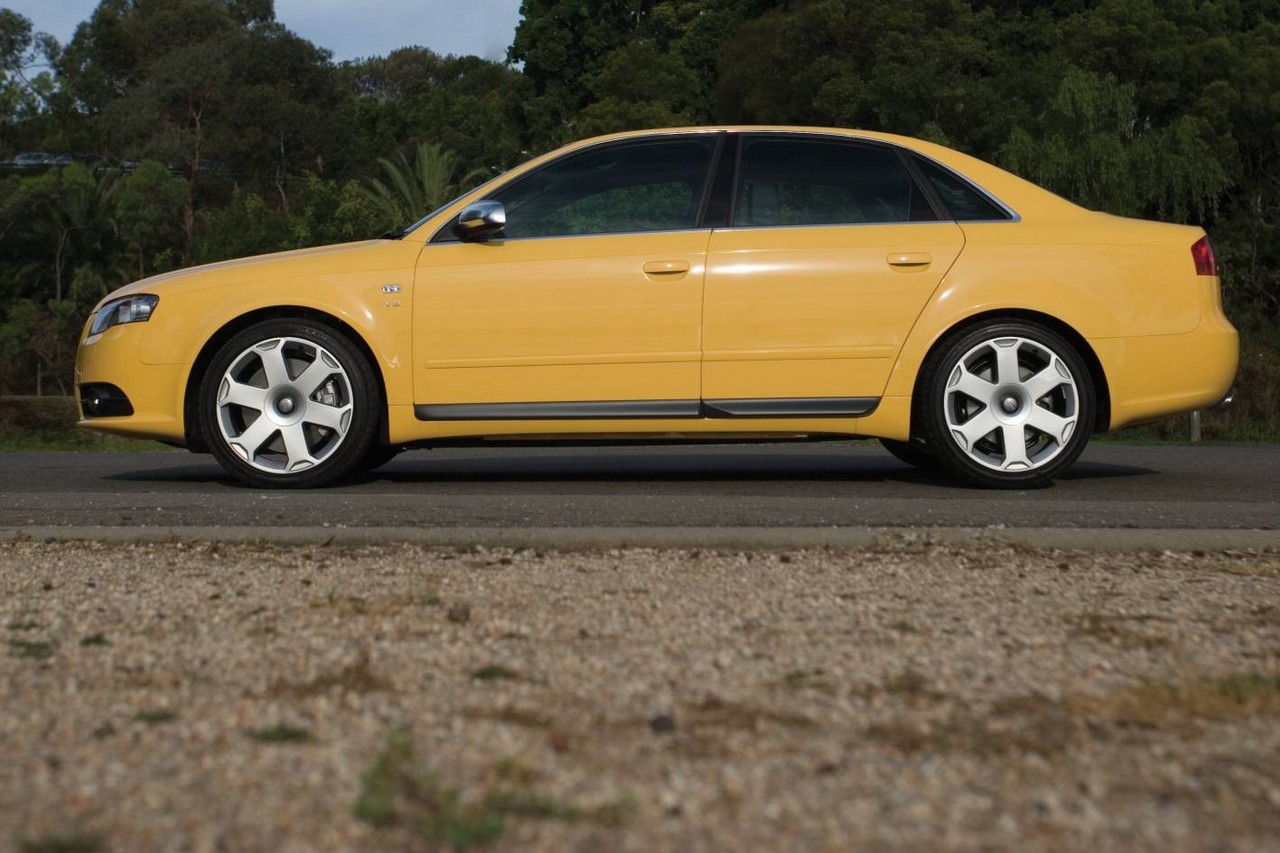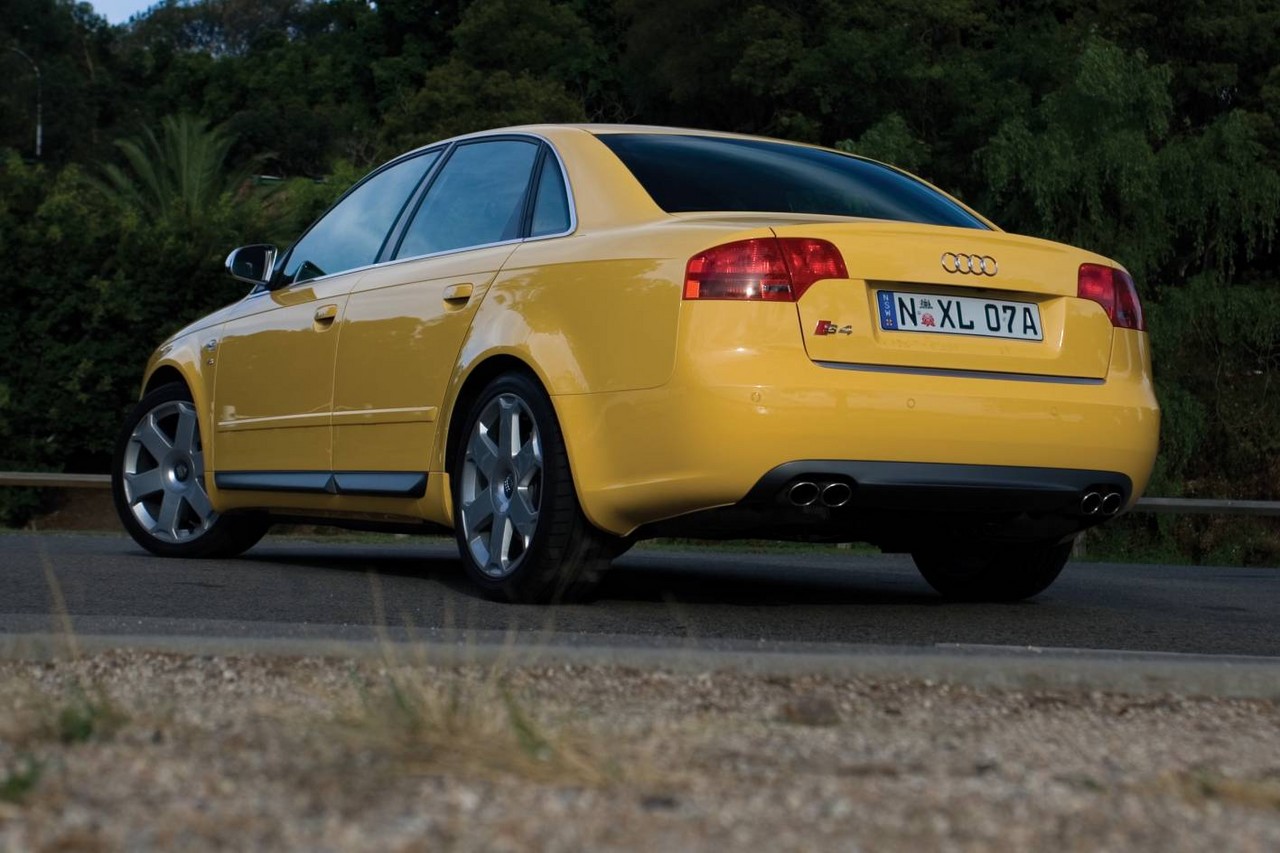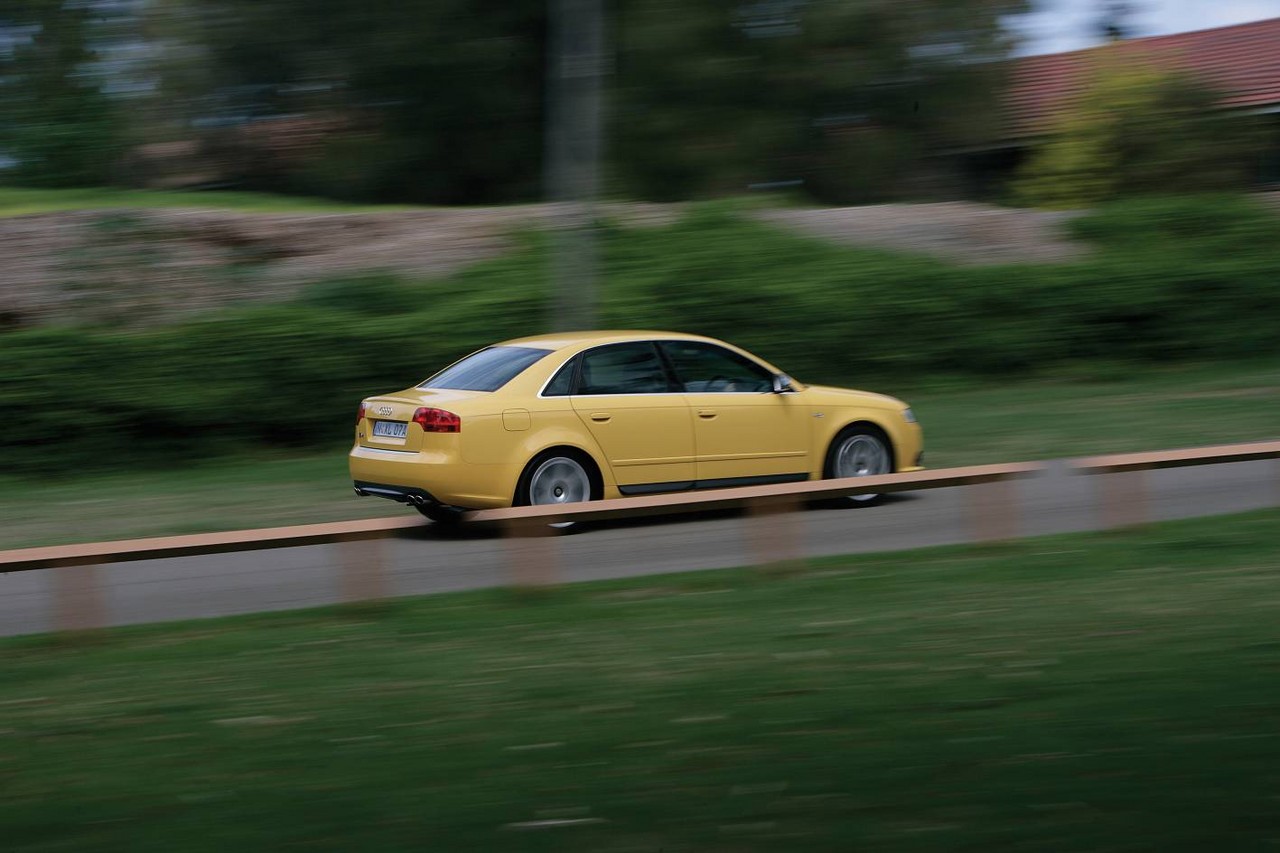
- Free-revving V8 engine sounds great
- Traction from quattro system contributes to impressive dynamics
- Comfortable and supportive Recaro seats (in Nappa leather upholstery)
- Steering rack rattle over mid-corner bumps
- Suspension lacks compliance
- High maintenance costs
Overview
Released in November 2005, the Audi B7 S4 was a compact executive, sports sedan. Manufactured in Ingolstadt, the Audi B7 S4 was powered by a 4.2-litre V8 petrol engine that was mated to a six-speed automatic transmission that drove all four wheels via Audi’s quattro system.
4.2 V8 engine
The Audi B7 S4’s 4.2-litre BBK V8 petrol engine had a cast aluminium alloy block, die-forged steel crankshaft that operated on five main bearings, a cast aluminium alloy cylinder head, double overhead camshafts per cylinder bank (chain-driven), five valves per cylinder actuated by roller rocker cam followers, variable intake camshaft timing, a variable intake manifold, a compression ratio of 11.0:1 and maximum engine speed of 7200 rpm.
Although based on the AQH/AVP/AYS/BCS engines in the Audi D2 S8 , the length of the BBK engine was reduced by 52 mm to 464 mm so that it could fit in the engine bay of the Audi B6 S4. This reduction in length was achieved by transferring the chain drive to the clutch side of the engine and using chain-driven camshafts.
With a kerb weight of 1705 kg, the B7 S4 could accelerate from rest to 100 km/h in 5.8 seconds.
| Engine | Drive | Trans. | Peak power | Peak torque | |
|---|---|---|---|---|---|
| S4 | 4.2-litre BBK petrol V8 | quattro | 6sp auto | 253 kW at 7000 rpm | 410 Nm at 3500 rpm |
Dimensions and suspension
Compared to the Audi B6 S4 , the B7 S4 was 40 mm longer (at 4586 mm), 15 mm wider (1781 mm), 13 mm lower (1415 mm) and had a 6 mm longer wheelbase (2651 mm). Like the B7 A4 on which it was based, the B7 S4 had four-link front suspension with unequal length wishbones and self-tracking trapezoidal link rear suspension.
quattro
Like its B6 predecessor, the Audi B7 S4’s quattro four-wheel drive system initially utilised a Torsen T2 centre differential. In normal conditions, the system provided a 50:50 front:rear torque split but up to two-thirds of the engine’s torque could be directed to either axle if traction was lost. The system also included open front and rear differentials with electronic differential locks which could brake spinning wheels to enable cross-axle torque transfers.
From 2007, however, a Torsen T3 differential was fitted which provided a default 40:60 front:rear torque split. If traction was lost, up to 80 per cent of the engine’s torque could be directed to either the front or rear axles.
Safety equipment
Standard safety features for the Audi B7 S4 included dual front airbags, front and rear side airbags, full-length curtain airbags (i.e. for front and rear occupants), ABS, electronic brake force distribution, brake assist, electronic stability control, traction control, active front seat head restraints and front seatbelts with pretensioners and load limiters.
Brakes
The Audi S4 was fitted with radially ventilated front and rear disc brakes; the 345 mm (diameter) by 30 mm (width) front discs and 300 mm by 22 mm rear discs were both fitted with single-piston sliding calipers.
Features
Standard features for the Audi B7 S4 included 18-inch alloy wheels, a ten speaker sound system with a six-disc CD player, dual zone climate control air conditioning, cruise control, power adjustable Recaro front seats, Silk Nappa leather upholstery, directional bi-xenon headlights, front and rear fog lamps, automatic headlights, rear parking sensors, rain-sensing wipers, split and folding rear seats, remote central locking with proximity, power windows and heated mirrors, tilt and telescopic steering wheel adjustment, a motion-sensing alarm and an immobiliser.
Related links
